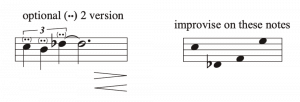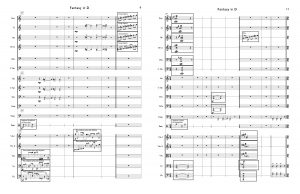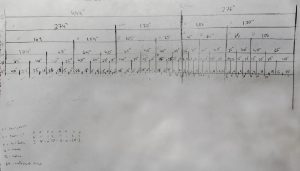Triangles was originally premiered on June 7, 2014, by the San Francisco Composers Chamber Orchestra (SFCCO). There was a very last minute cancellation for the May concert so decision was made to perform this piece again.
Triangles continues the experimental, colorist tradition of my earlier work Pollock, premiered by the SFCCO in 2002. Like Pollock, it employs guided improvisation and “sound-wash” techniques to create vivid sonic textures.

Triangles draws its title from the triangular number sequence, which generates values such as 1, 3, 6, 10, 15, 21, 28, 36, and 45. Each subsection in this piece (A, B, or C) aligns with specific triangular numbers, providing a structural undercurrent while leaving room for free, organic sound development.
The composition is divided into three large, four-minute sections, each exploring a ii–V–I pitch center—a nod to my jazz roots. Within these sections, three internal parts unfold:
• A (Modal Runs)
• B (Intervallic Movements)
• C (Chordal Sustains)
Guided by the performance notes, these parts combine to form a quasi-rondo layout: A, B, C, B1, C1, A1, C2, A2, B2 which loosely mirrors traditional rondo form (A, B, A, C, A, B1, A). In classical music, rondo form is characterized by the recurrence of an A section interspersed with contrasting episodes (B, C).
Guided Improvisation and Color
Throughout Triangles, performers are encouraged to use guided improvisation informed by the performance notes: from airy modal runs in the A sections, to intervallic interplay in B sections, and finally to rich, sustained chords reminiscent of “Ruggle-esque” sonorities in C sections. As the music unfolds, each performer’s spontaneous contributions create constantly shifting textures and densities—especially during the crescendo–decrescendo passages, which control not just volume but note density and rhythmic activity.
Sound Aesthetics
While triangular numbers and ii–V–I tonal centers form the backbone of Triangles, its essence lies in the fusion of structured form and spontaneous performance. The result is a continuously evolving collage of sound, meant to ignite the listener’s imagination through contrasting dynamics and timbres. Enjoy the synergy of a carefully crafted design and free expression that gives Triangles its bold, evolving sound.
Triangles,2025 Performance
Musician Feedback
One of the most meaningful compliments I’ve received came from the concertmaster, who told me how much he enjoys playing my music—that it makes him feel like a kid again.
When I compose, I always ask myself whether the music will be fun to play. If the performers aren’t enjoying themselves, then what’s the point? Music should be a joy, both to hear and to perform.







